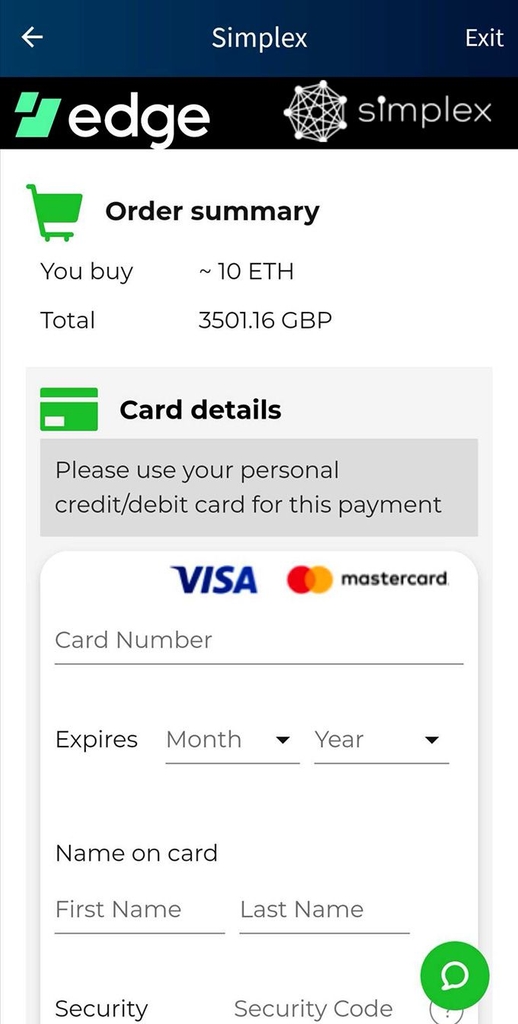Edge Wallet Review

Do you know what cryptocurrencies and the increasing use of mobile phones have in common? That’s right – exclusively mobile-based crypto wallets. No matter if you were reading some Edge wallet reviews or any other mobile wallet feedback, the current trends are undeniable.
What trends are those? Well, while the topic of cryptocurrencies is becoming increasingly more popular every single day, it’s obvious that people are also using their phones for multiple reasons, more and more – whether it be to browse social media, watch videos, or even pay taxes and make other financial actions.
With that, though, there’s an influx of mobile crypto wallets that’s quite noticeable, too. Picking the right one for yourself can be a difficult choice to make! Well, if you’re currently in the process of looking, read through this Edge wallet review and check it out – perhaps it’s the right wallet for you. If not, though, note that there are always alternatives, more-popular options available – in this industry, Ledger and Trezor are the two undeniable leaders.
TL;DR: The Edge wallet is seen as being quite simple to use, and is a great choice for those who trade cryptos often. It supports multiple different altcoins and even some ERC-20 tokens, and possesses decent security measures, too.
Pros
User-friendly: Edge Wallet is known for its intuitive and user-friendly interface, which makes it easy for both beginners and advanced users to manage their cryptocurrency assets.
Advanced security features: Edge Wallet offers advanced security features like two-factor authentication, biometric login, and client-side encryption to protect users’ funds and personal information.
Multi-currency support: Edge Wallet supports a wide range of cryptocurrencies, including Bitcoin, Ethereum, Litecoin, and many others, making it a versatile option for managing multiple assets in one place.
In-app exchanges: Edge Wallet allows users to exchange cryptocurrencies directly within the app, which makes it a convenient option for those looking to buy or sell assets on the go.
Cons
Centralized: Edge Wallet is a centralized wallet, which means that users’ funds and personal information are stored on Edge’s servers. This can be a potential security risk, especially if the servers are compromised.
Limited control: Because Edge Wallet is a custodial wallet, users don’t have full control over their private keys, which means they don’t have complete control over their funds.
Transaction fees: Edge Wallet charges transaction fees for sending cryptocurrency, which can be higher than other wallets or exchanges.
Limited support: While Edge Wallet offers support for a wide range of cryptocurrencies, it may not support all of the assets that users are interested in managing.
Edge Wallet Review: PROS
What many people might be confused about when they first search for some Edge wallet reviews is the fact that the name “Airbitz” does show up quite often, in related searches.
Well, that’s simply because that’s what the wallet was called, at a certain point in time. Back then, though, it was a completely different product, and – as you can probably imagine – there have been a lot of different intricacies involved, both from a product perspective, and from that of the company behind it.

Suffice to say that Airbitz was a Bitcoin wallet, when it was still ‘a thing‘ – that’s why there are many people who search for the “Edge Bitcoin wallet”. The improved and renamed version of the product, though, now offers multiple cryptocurrency support – it’s no longer a Bitcoin-exclusive sort of a deal.
Starting things off on a positive note, though, let’s address the aforementioned elephant in the room – the fact that Edge now supports a whole bunch of different cryptocurrencies.
Multiple Cryptocurrency Support
One of the more referenced features of a decent cryptocurrency wallet has to be its capability to support multiple different altcoins. This is a sentiment that’s also true among user Edge wallet reviews, too.
If you’re not too familiar with the crypto terminology, allow me to explain – an “altcoin” is basically any cryptocurrency that’s not Bitcoin. While the definition has had some changes over the years, and there are many cryptos that have nothing to do with Bitcoin (meaning, they aren’t a “fork” of BTC), the general sentiment is still the same.
I’ve already emphasized this at the beginning of the Edge wallet review, but, with the increasing popularity of cryptocurrencies around the world, people are starting to invest into a bigger variety of coins, too. With that, though, there comes the nuisance of having to find a wallet that would support all of those coins.

Some people prefer storing different cryptocurrencies in different wallets – truth be told, it might be safer that way! Still, if you value convenience, or are an active trader, you’d probably want a single wallet for easier access and simpler (& faster!) trading.
How to use the Edge Cryptocurrency Wallet?
Using the Edge Cryptocurrency Wallet is relatively straightforward. Here are the general steps to use the Edge Wallet:
Download and install the Edge Wallet app from your mobile device’s app store. The app is available for both iOS and Android.
Open the app and select “Create Account” to set up a new wallet. You’ll need to enter an email address and create a strong password to secure your wallet.
Once you’ve created an account, you can add cryptocurrencies to your wallet. To do this, select “Add Currency” and choose the cryptocurrency you want to add. You can add multiple cryptocurrencies to your wallet.
To receive cryptocurrency, select the currency you want to receive and tap the “Receive” button. This will display a unique wallet address that you can share with others to receive funds.
To send cryptocurrency, select the currency you want to send and tap the “Send” button. Enter the recipient’s wallet address and the amount you want to send.
For added security, Edge Wallet offers advanced features like two-factor authentication and biometric login. You can enable these features by going to “Settings” and selecting “Security”.
Finally, Edge Wallet offers a range of additional features like price alerts, in-app exchanges, and more. Explore the app to discover all the features and benefits of the Edge Cryptocurrency Wallet.
Overall, Edge Wallet is a powerful and user-friendly mobile wallet that offers a secure way to store and manage your cryptocurrency assets. By following these steps, you can start using the Edge Wallet to manage your cryptocurrencies.
How to Install and Set Up the Edge Wallet?
First things first – the installation and set up processes.
Step 1: Download and install the app from the store of your choice. I’m using an Android device, so my example includes the Google Play Store.
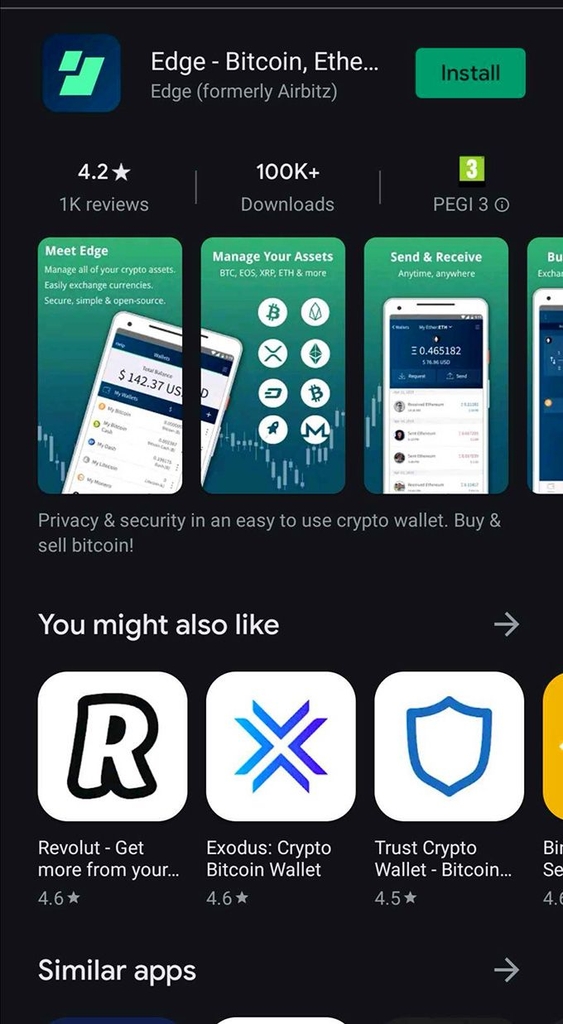
Step 2: After you install and fire it up, you’ll be given the option to create an account. Press the button to continue.

Step 3: Here, Edge explains how you’ll be the solemn owner of your username and private keys, and how it is thus your complete responsibility to remember them. Take notes!
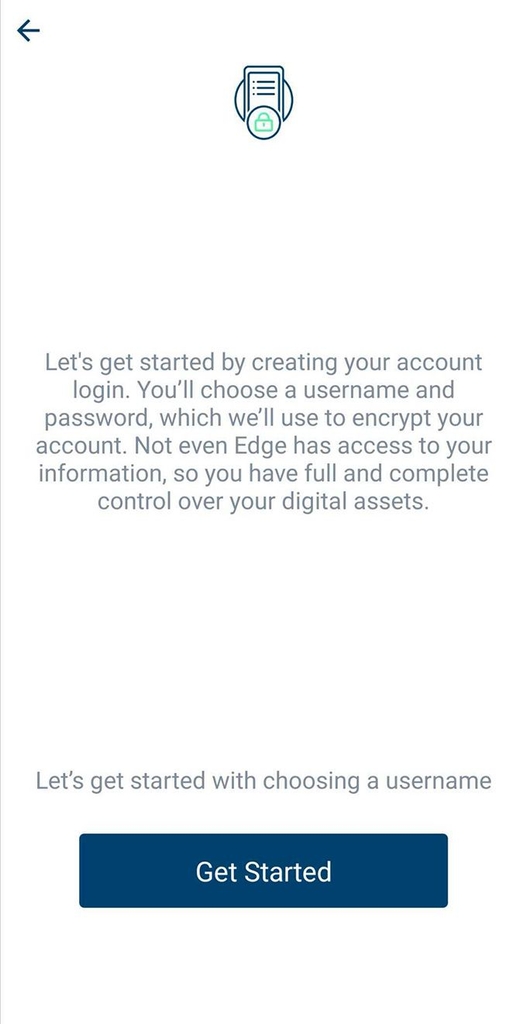
Step 4: Create a username of your choice, and continue.
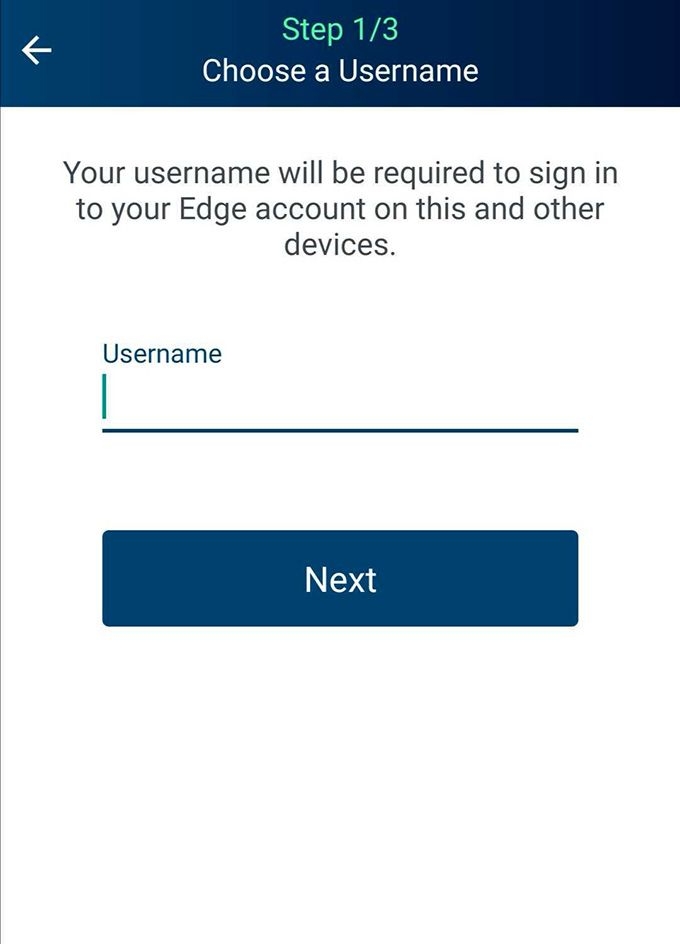
Step 5: Create a password, and confirm it. Make sure to write all of this information down, and only use a new and never-before-used password!

Step 6: Lastly, you are prompted to create a custom PIN code. It’s an added layer of security – and a welcome one, at that!

Step 7: You’ll be given a few additional confirmations – review everything, and continue.

Step 8: That’s it – you now have an Edge wallet account!
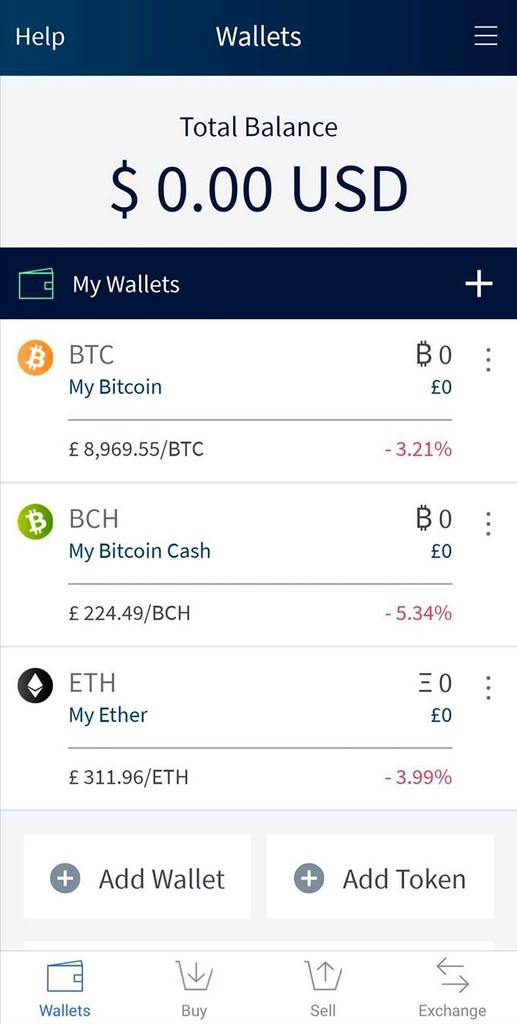
While the process of creating this wallet might have taken longer than with most other mobile wallet apps, it’s still far from being a hassle.
How to Transfer Funds to the Edge Wallet?
Now that you have an account, let’s take a look at the actual crypto asset transferring process.
Step 1: From the homepage of the Edge wallet app, navigate to your wallet – you can do so by either creating a new, custom wallet, or utilizing an already-existing one that’s been created for you. For this example, I’m using the Ethereum wallet.
Step 2: Here, you’ll notice two buttons – “Request” and “Send”. Press the former.

Step 3: On the page that pops up, you’ll see your generated wallet address, and a QR code. All that you need to do now is copy that address, enter the amount of ETH that you’re going to receive, and send the address to the sender – that’s it!

Transfering (and receiving) crypto assets with the Edge wallet is actually quite simple. The transferring process shouldn’t take long at all, too!
How to Buy Cryptocurrency with the Edge Wallet?
Finally, let’s take a look at the crypto-buying process within the wallet in question.
Step 1: In the home screen of the app, press the “Buy” button at the lower end of the screen.
Step 2: You’ll be prompted to pick your country of residence. Upon doing so, you’ll be presented by a few different options of how you could pay for your new crypto coins. Examples include a bank transfer, credit and debit cards, and cash payments.
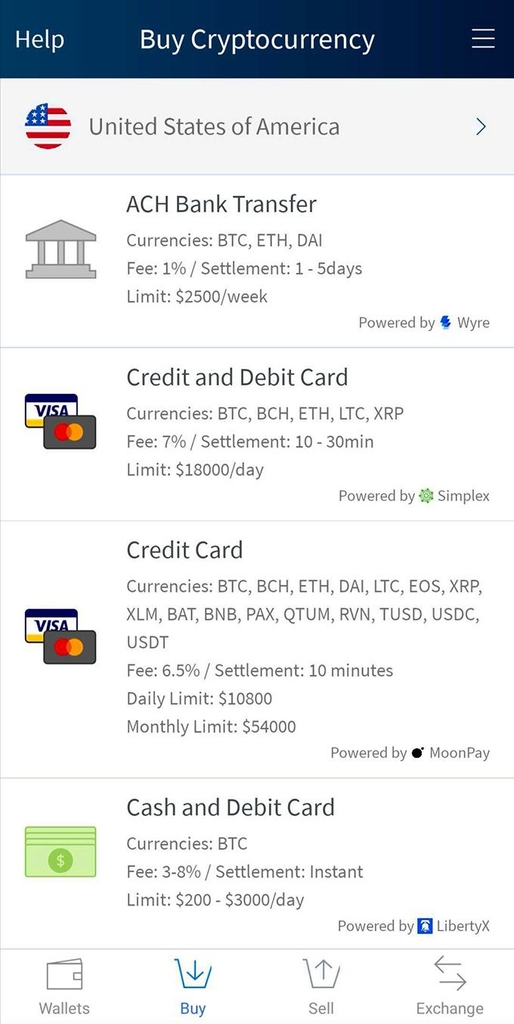
Step 3: Choosing a payment method will also automatically decide the middleman that will participate in your transaction. In my case, upon choosing to purchase ETH via a credit/debit card, that middleman is Simplex. After a few confirmations, you’ll be asked to choose a destination wallet, and enter the amount of crypto coins that you want to purchase.
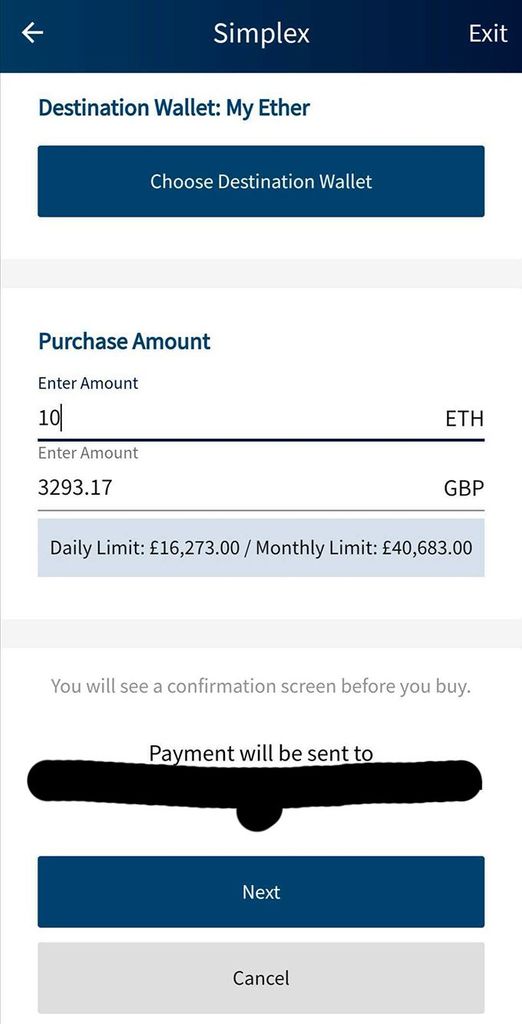
Step 4: Upon double-checking everything, you’ll be then redirected to Simplex, where you’ll have to enter all of your payment details. Once that’s settled, and you’ve made the payment, you’re done – all that’s left is to await for your new crypto coins to arrive in your wallet!
